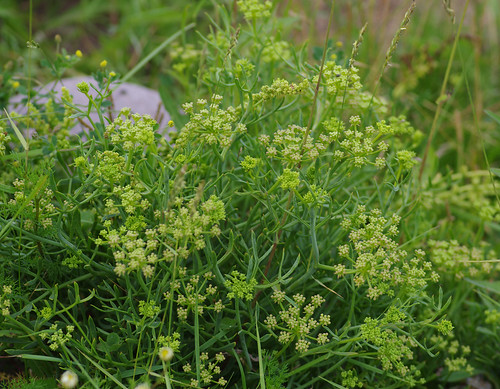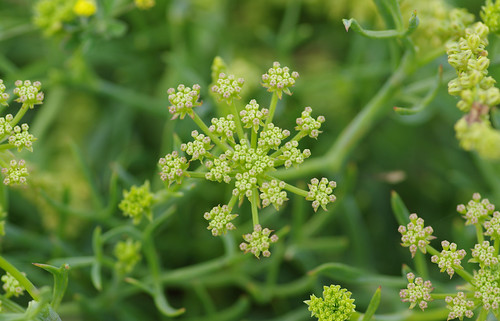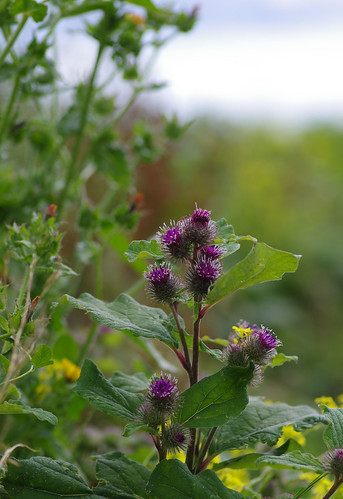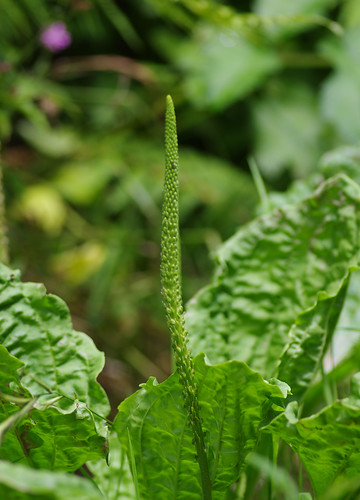Mansands

From Mansands, looking inland
In the 1960s, the National Trust had the foresight to launch a campaign to preserve important areas of the Great British coastline for future generations. Operation Neptune caught the public's imagination and donations soared. Consequently many important and iconic miles of cliffs and shores were purchased and preserved forever.
As well as the obvious terrestrial border, the coastline represents something wider and deeper: it has shaped notions of local and regional identity, and helped define the national consciousness. It's a sobering thought that things could have been very different. Strolling down the lane with fields on either side of the hedge; fields that could have long gone to houses. We look down on the lake that could have been a marina.
For these green spaces, we are eternally grateful. They are not wild in the true sense because the overwhelming majority have to be managed. It is easy to forget about the human part of the equation and how much work is required to optimally conserve and maintain a landscape. It's not just there for us to look at and enjoy. Meanings are arrived at by delving under the surface; by wondering who and when and why.
You can adopt the same approach when watching wildlife. And through repeated observation, invaluable lessons can be learned. Walking down Woodhuish lane, the usual culprits come into view like impish sprites and are gone again before they can be truly captured. The light is garishly bright one moment and gloomily overcast the next. Sherry and the camera make many valiant efforts but the list of the ones who got away just keeps getting longer: Red Admirals and Comma butterflies on crinkled bramble flowers, a Meadow Brown or two among the bracken. We begin to doubt whether there will be any pictures at all. We go into the bird hide past the wickerwork fence, and gaze longingly at the lake. But all is quiet on the water and around the margins. A duck or two, here and there, and that's about it.
Mansands is a shingle beach. While Sherry heads for the water to take more pictures of Lady, I scan the boulder ridge at the back. The lake behind the ridge has changed on more than one occasion in recent years. It used to be a freshwater lake until a storm tide breached the ridge. Huge boulders were placed to protect the lake but these were no match for the tide and now the watery area behind the beach has been allowed to flood naturally.

Pineappleweed (Matricaria discoidea)
I have seen these flowers many times before. Usually, they grow on wasteground such as up between the cracks of people's driveways. As well as having a colour vaguely reminiscent of pineapple, they are also said to smell of the fruit.

Common Fleabane (Pulicaria dysentrica)
In olden times, fleabane was used to treat dysentry. Its leaves were also burned and scattered to rid houses of fleas (hence the name.) In its flowering state these flies seemed to find it quite attractive.

Sea Mayweed (Tripleurospermum maritimum)

And the same species in a larger group
Sea Mayweed is a specialist in this habitat. When a breeze is blowing it's often difficult to capture all the flowers sharply. I like the way the flowers in the picture above are in different states. Evidently, the leaves bend back and the heads protrude more as time passes.

Common Ragwort (Senecio jacobaea)
This flower often sprouts up rapidly in rough pastures but is toxic to horses, sheep and cows. I believe it is also poisonous to humans.


Two views of Rock Samphire (Crithmum maritimum)
This is an edible plant and highly prized by restaurants to accompany fish dishes. Recently I read (and was rather incensed by) an article by a top chef, advocating people pick samphire. Within a sentence or two of admitting rock samphire was a rare plant, the chef then encouraged people to pick it! Besides the fact that if too many people picked a plant it could disappear altogether, should anyone be allowed to profit from samphire when they could be endangering it? Its rarity pushes the price up, which in turn will encourage more people to go samphire foraging.

Wild Carrot (Daucus carota) ssp carota
We were looking out for the dome-shaped Sea Carrot (also called Moon Carrot) when we saw its wild cousins. I don't know why there is a red dot in the middle of the flowering head but presumably it attracts pollinators.

Lesser Burdock (Arctium minus)
On sites and in books, the two Burdocks (Lesser and Greater) look alm0st indistinguishable. We plumped for the former here.

Common Toadflax (Linaria vulgaris)
Sherry tried out several different angles for this one until obtaining just the right light. These flowers look almost triffid-like. They also remind me of a Rolling Stones album cover but for the life of me I can't remember which one.

Greater Plantain (Plantago major)
Within a minute or two, the light had gone. Shooting down and into a hedge always creates problems. This was the best of the plantain shots. Walking up Mansands Lane, we had been heading into a black cloud and knew there was no escape. Thankfully, as we took a left down into Mill Lane, we were relatively sheltered. At the bottom the path became a clear stream. At the junction with Penhill Lane, in the open, we trusted to chance and stopped for lunch. Mid-sandwich, the heavens opened. Our companions for the day, Linda and Mick Watson, acted instinctively. Scout-masters never forget the motto. They are always prepared. Mick had his groundsheet out in a flash and found a log to prop it up at one end. We all sheltered underneath, waiting for the shower to end. When it showed no sign of abating, we continued up the lane. There was not really much of interest to see. To be honest, I don't think I was really looking properly. I did see some impressive cuckoo spit. It is the stuff left on plants by the nymphs of froghoppers and sometimes gives the impression the plant is bubbling.
In different circumstances it might have made a good picture. The camera is water-sealed but we did not fancy testing it to the limits. Limits are always there to be broken, after all.
WALK ROUTE
This is a fairly short walk but there is much of interest to divert your attention. The route is fairly simple but if you intend to follow it, I would advise taking the OS Explorer Map OL20 South Devon just in case you inadvertently take a wrong turn.
From the car park at the bottom of Scabbacombe Lane, continue straight ahead down Woodhuish Lane. You might want to enter the bird hide on the way down to search the lake and look for birds.
Mansands is a shingle beach. Once there, proceed to the left along it. You will probably be able to step or jump across the stream coming from the lake. If not, walk further down the beach and look for the first suitable place to cross. Then walk left along Mansands Lane and continue up the hill. Take the first junction on the left (Mill Lane) and walk along it and through the path/stream until the next junction. Waterproof boots are essential here.
At the next junction turn left again and continue up the hill. At the top, take the right turn and you will soon have closed the circuit and be back in the car park. I would allow a good two hours to walk this route. And if you are like us, stopping to look at anything and everything en route, two hours could easily turn to four...

Comments
Add a Comment